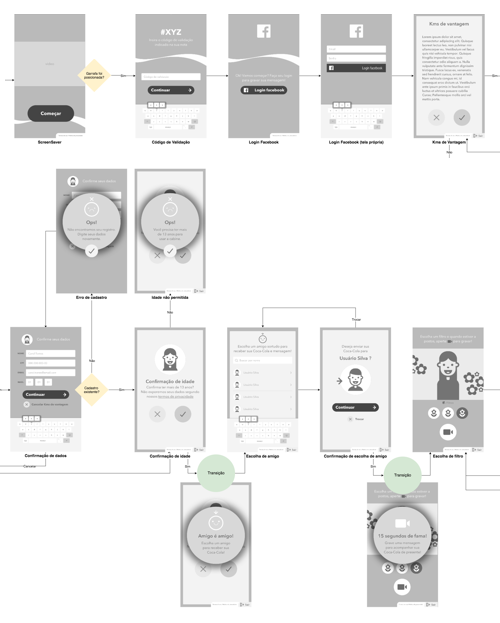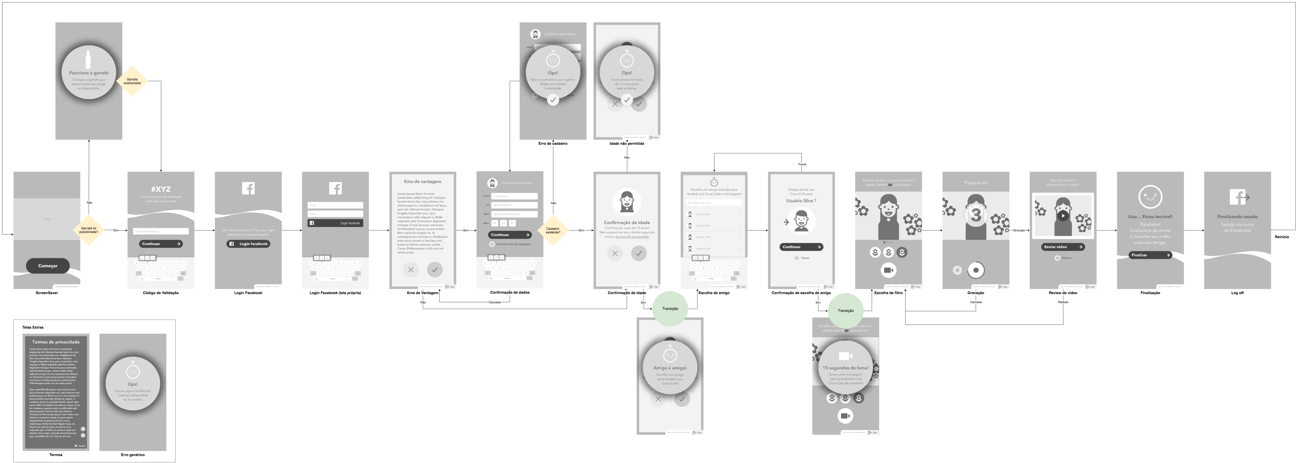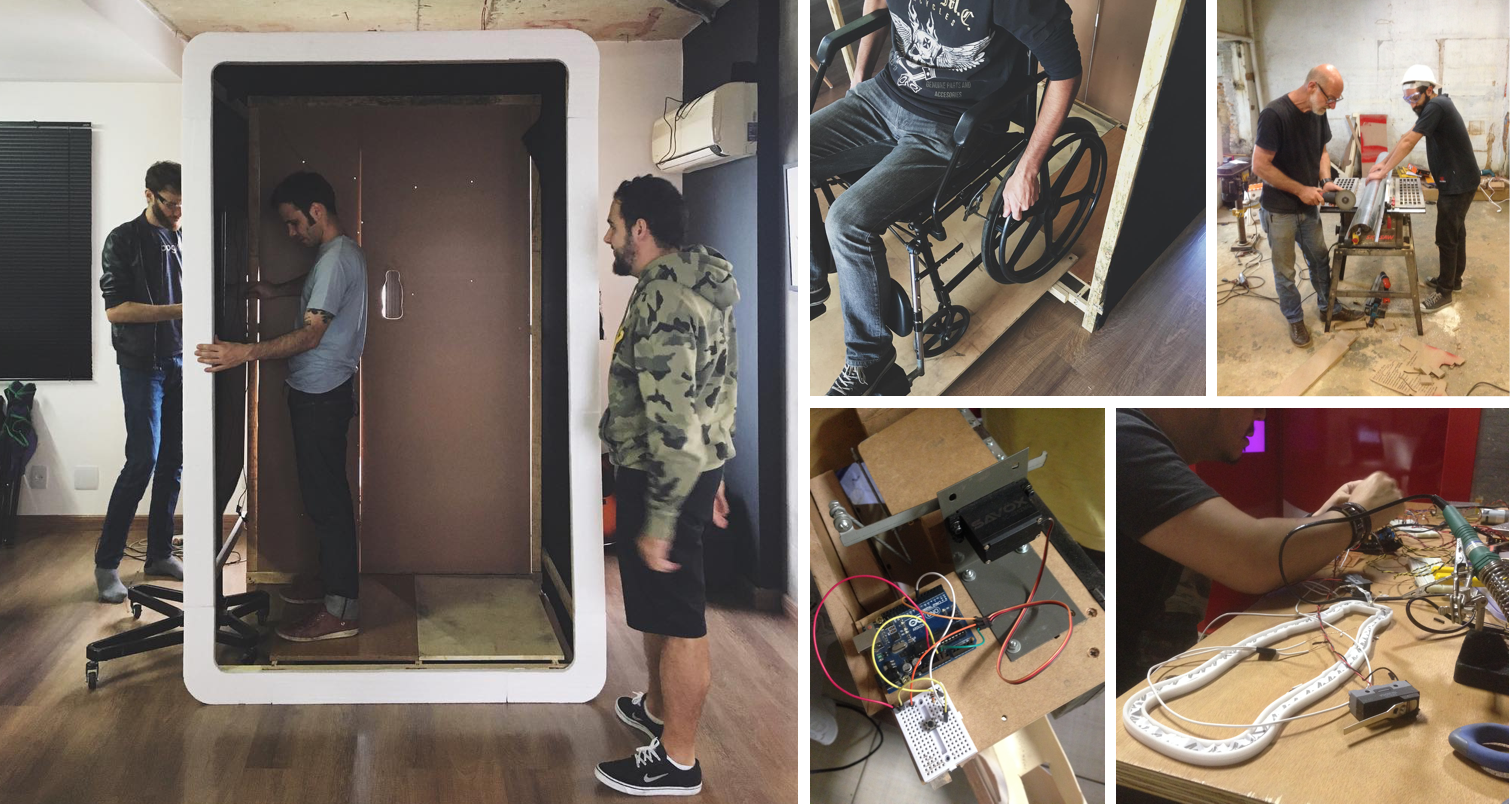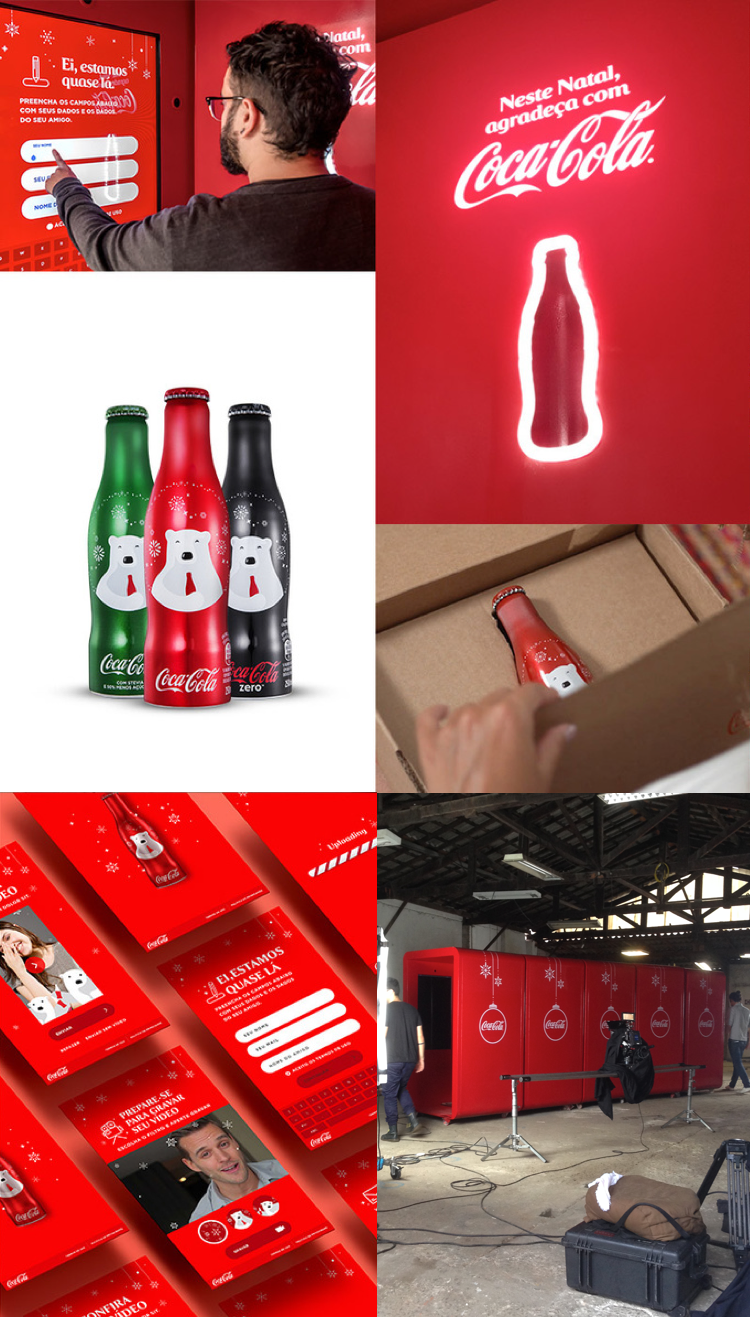
THE “THX BOX” IS NOT A REGULAR VENDING MACHINE. IT IS A SENDING MACHINE.
Deposit the special Coca-Cola bottle in the machine, and let it guide you through the experience of sending a loved one a Christmas message.
Main roles in this project:
Art Direction - User Experience - Industrial Design

The shape of the machine was widely discussed from the first day of the project, so that we could arrive at a solution that would overcome the logistical challenges of transporting a machine of large dimensions to different locations in Brazil, yet maintaining all usability requirements - such as accessiblity to wheelchair users, people of different heights and ages, or with motor disabilities.

The wireframe played an essential role in defining and validating physical and digital interactions

The wireframe played an essential role in defining and validating physical and digital interactions





